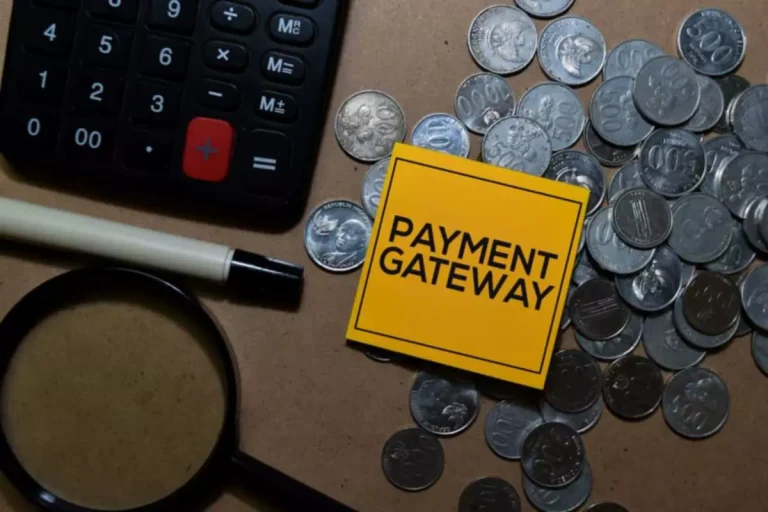23 Mar What Does Proof-of-Stake PoS Mean in Crypto?
Crypto exchanges like Coinbase, Binance and Kraken offer staking as a feature on their platforms. Depending on the blockchain, crypto owners can https://www.xcritical.com/ earn yields of 5% to even 14% on their holdings by staking. Tezos uses a unique proof-of-stake mechanism called liquid proof of stake (LPoS)..
There’s no central gatekeeper to manage a blockchain’s record of transactions and data. Instead, the network relies on an army of participants to validate incoming transactions and add them as new blocks on the chain. It differs from proof-of-work significantly, mainly in the fact that it incentivizes honest behavior by rewarding those who put their crypto up as collateral for a chance to earn more.
Are these critiques honest, or are they primarily motivated by profit-driven incentives? This article will dig into these concerns and evaluate the advantages the PoS system offers popular blockchains. Proof-of-stake has recently shared a bulk of the spotlight as Ethereum transitioned from proof-of-work (PoW) to PoS in September 2022. But statements and actions from SEC Chair Gary Gensler have many concerned that PoS blockchains are vulnerable to security laws enforcement. Ethereum switched on its proof-of-stake mechanism in 2022 because it is more secure, less energy-intensive, and better for implementing new scaling solutions compared to the previous proof-of-work architecture.
Long-range attacks
To drive the point home, these distributed networks must all adopt an identical cryptographic mechanism to arrive at consensus. Proof of work has earned a bad reputation for the massive amounts of computational power—and electricity—it consumes. Given heightened concern about the environmental impacts of blockchains that use proof of work, like Bitcoin, proof of stake offers potentially better outcomes for the environment.
This unique proof-of-stake mechanism is highly compatible with the Tezos on-chain governance mechanism. Ethereum is a universal platform of smart contracts that can be used to run decentralized applications. Its main value is not its native Ether coin (ETH) but the opportunities provided by the EVM virtual machine. The money in their account is the pledge and guarantor of the validator’s presence in the network and the correctness of its node.
Features of PoS consensus
Delegating gives the baker a higher chance of being selected to bake and endorse blocks. Bakers can share their earned rewards with their delegators which encourages delegators to keep participating. Delegating to a baker also allows you to select a representative for on-chain governance. This is similar to how a representative would work in a republic to represent their constituents.

It’s also feasible for a staker to go rogue and approve incorrect transactions. The PoS algorithm allows for a more scalable blockchain with increased transaction throughput, and it has already been used by a few projects, such as the DASH cryptocurrency. It is, however, less secure than the POW algorithm, which is entirely decentralized.
As a rule, the amount of commissions becomes a stumbling block for miners. Mining with PoS systems is, to some extent, the optimal choice for many experts who mine new blocks in the distributed ledger network. High speed of verifying transactions, low commissions, and convenience of work with the system allows to achieve high results in mining new blocks in the blockchain network. Compared to the Proof of Work (PoW) consensus system, PoS offers a very low fee for mining new blocks, which is still dependent on the blockchain network. Their solution was to create a totally new ETH2 blockchain, which went live in December 2020 and is expected to be completed in 2022.
Cardano
The validator selection in Ethereum’s Proof of Stake (PoS) system is based on a validator’s stake in the network. To explain, the greater the stake, the more likely that node will be selected to add the new block to the chain. The verification of transactions on a blockchain network, in which transactions are added as entries into t… Other proof-of-stake blockchains such as Cardano do not have lock-up periods for the delegated stake. So if a user doesn’t want to run their node, they can delegate their ADA directly to a stake pool without losing custody. A transaction has «finality» in distributed networks when it is part of a block that can’t change without a large amount of ETH getting burned.
PoS and PoW aim to achieve a consensus on their respective blockchains, albeit both use different methods. PoS allows validators to verify transactions, but they can only participate by staking a certain amount of native cryptocurrency and receive transaction fees as a reward. PoW, on the other hand, rewards miners who solve complex equations with new blocks and native cryptocurrencies. Proof of stake blockchains use a network of «validators» who contribute or «stake» their own crypto in exchange for a chance to validate new transactions, update the blockchain, and earn a reward. Proof of work is the original crypto consensus mechanism, first used by Bitcoin.
- When Cardano needs to verify blocks of transactions, its Ouroboros protocol selects a validator.
- The amount of ETH slashed depends on how many validators are also being slashed at around the same time.
- Any attempt at dishonesty could lead to substantial losses in the value of their staked assets.
- Before comparing PoS with PoW, let’s understand what a PoW consensus mechanism is.
The core of the Ethereum 2.0 architecture is the Proof of Stake (PoS) consensus mechanism, which will replace the existing Proof of Work (PoW) consensus mechanism. Validators who hold large amounts of a blockchain’s token or cryptocurrency may have an outsized amount of influence on a proof of stake system. Validators are selected randomly to confirm transactions and validate block information. This system randomizes who gets to collect fees rather than using a competitive rewards-based mechanism like proof-of-work.
It is a variant of the Practical Byzantine Fault Tolerance (PBFT) system, and it allows distributed networks to achieve consensus despite attacks from malicious nodes. The PoW algorithm, on which Ether used to run, required the constant solution of complex mathematical problems. To do that, miners created huge farms with powerful computer equipment that consumed gigawatts of electricity. After switching to PoS, it is enough to have money in an Ethereum wallet connected to the Internet to validate transactions. Mining farms do not need to be used, which has saved energy in the amount consumed by an entire country.
To activate your own validator, you’ll need to stake 32 ETH; however, you don’t need to stake that much ETH to participate in validation. You can join validation pools using «liquid staking» which uses an ERC-20 token that represents your ETH. Learn more about proof-of-stake and how it is different how ethereum proof of stake works from proof-of-work. Additionally, find out the issues proof-of-stake attempts to address within the cryptocurrency industry. This type of consensus algorithm boasts a number of impressive advantages. Before comparing PoS with PoW, let’s understand what a PoW consensus mechanism is.

If an attacker wants to revert a finalized block, they would therefore have to be willing to lose at least one-third of all the ETH that’s been staked. Someone in the BitcoinTalk forum first introduced proof-of-stake as a possible solution to the computing resources problem. Sunny King, an anonymous author, and Scott Nadal later implemented it in their published whitepaper for Peercoin. Blockchain is a record-keeping technology designed to make it impossible to hack the system or forge the data stored on it, thereby making it secure and immutable.
Because of how it works, proof of stake benefits both the cryptocurrencies that use it and their investors. Cryptocurrencies that use proof of stake are able to process transactions quickly and at a low cost, which is key for scalability. Investors can stake their crypto to earn rewards, providing a form of passive income. And the fact that proof of stake is environmentally friendly means it will likely continue to grow more popular as a consensus mechanism.
About ethereum.org
If the planned implementation of PoS in a well-known protocol like Ethereum goes well, the crypto community will be reasonably confident in the PoS algorithm’s ability to keep the network safe. That could tip the scales in favor of PoS, and only time will tell which one will emerge as the future blockchain consensus method. POW has been thoroughly tested and is utilized in a variety of cryptocurrency applications.

Sin comentarios